along with nice, slightly chalky minerality and a
hint of fennel on the palate. With good cut, weight and length, this
will pair well with a variety of seafood. According to Marco, Grechetto
has good aging potential, “unlike Trebbiano.”
Sourced from vineyards located on the
western side of the Estate at around 200 meters above sea level, using
the cordon system, spur pruned with 8-10 buds; soil is of medium
consistency with alluvial substrata similar to Vernacia. Individual
vineyards harvested separately; vinification takes place in steel
containers for about one month at controlled temperatures, with the wine
then kept on the residual lees for over two months to impart aroma and
bouquet. Racked and bottle-aged for about 2 months before release. Find this wine
2004 Podere il Caio
Rosso dell’Umbria IGT, 60% Sangiovese, 20% Cabernet Sauvignon, 20%
Merlot, 13% alc., approx. $13.99: Good color, with
blackberry, dried cherry, a little licorice and an earthy minerality;
medium-full to full bodied, with good structure. A solid everyday red
to pair with grilled red meats and tomato-based pasta.
Sourced from vineyards located at various
altitudes and exposures, using the cordon system, spur pruned with 6-8
buds; soil varies from medium to loose (medium clay and sand).
Individual vineyards and varieties are harvested separately;
vinification and maceration take place in steel containers for around 12
– 15 days at controlled temperatures, with each variety and each
vineyard separately vinified. Malolactic fermentation follows the
initial fermentation, then the wine is transferred to small oak French “barriques”,
with a small percentage put into Slavonian oak casks for about 3-5
months. Bottle-aged for around 2-3 months before release.
Find this wine
The following wine is one that I’ve tasted from previous vintages, so it was good to become reacquainted with it.
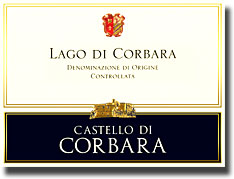 2003
Castello di Corbara Lago di Corbara DOC, 50% Sangiovese, 25% Cabernet
Sauvignon, 25% Merlot, 13% alc., approx. $16.99: Rich garnet
color, with floral blackberry, black cherry and licorice on the nose,
following through on the palate with even deeper, darker character
anchored by earthy minerality; well structured, with great depth and
length. A lovely wine at a great price; Marco says that he likes this
wine the best, because it’s most typical of the area. Another excellent
match for a variety of grilled red meats (I might opt for a leg o’ lamb)
and tomato-based pastas. Sourced from
vineyards with 26 & 28 year and older vines, located at various
altitudes and exposures, using the cordon system, spur pruned with 6-8
buds; soil varies from medium to loose (medium clay and sand).
Individual vineyards and varieties are harvested separately;
vinification and maceration take place in steel containers for around 12
– 15 days at controlled temperatures, with each variety and each
vineyard separately vinified. Malolactic fermentation follows the
initial fermentation, then the wine is transferred to small oak French “barriques”,
with a small percentage put into Slavonian oak casks for 12 months.
Bottle-aged for about 4-5 months before release.
Find this wine
2003
Castello di Corbara Lago di Corbara DOC, 50% Sangiovese, 25% Cabernet
Sauvignon, 25% Merlot, 13% alc., approx. $16.99: Rich garnet
color, with floral blackberry, black cherry and licorice on the nose,
following through on the palate with even deeper, darker character
anchored by earthy minerality; well structured, with great depth and
length. A lovely wine at a great price; Marco says that he likes this
wine the best, because it’s most typical of the area. Another excellent
match for a variety of grilled red meats (I might opt for a leg o’ lamb)
and tomato-based pastas. Sourced from
vineyards with 26 & 28 year and older vines, located at various
altitudes and exposures, using the cordon system, spur pruned with 6-8
buds; soil varies from medium to loose (medium clay and sand).
Individual vineyards and varieties are harvested separately;
vinification and maceration take place in steel containers for around 12
– 15 days at controlled temperatures, with each variety and each
vineyard separately vinified. Malolactic fermentation follows the
initial fermentation, then the wine is transferred to small oak French “barriques”,
with a small percentage put into Slavonian oak casks for 12 months.
Bottle-aged for about 4-5 months before release.
Find this wine
2004 Castello di Corbara Lago di Corbara Cabernet Sauvignon DOC, 13.5% alc., $16.99:
Deep, dark color, with equally deep, dark black currant and
blackberry flavors and aromas accented with some red pepper and
underscored with some serious earthy minerality. Very well structured,
with excellent length on the finish, and yet already delicious; I’m all
for a medium rare rib eye steak with this one, or maybe even some
serious steak tartare. Sourced from
small vineyards located at different altitudes and exposures (Vallecchio,
Ponticello & Viavalle), using the cordon system, spur pruned with 6-8
buds; soil varies from medium to loose calcareous clay with an alluvial
substrata and pebbles. Individual vineyards harvested separately and by
individual clones, with vinification and maceration separately for each
vineyard, in steel containers, for around 15-18 days at controlled
temperatures. After initial fermentation, malolactic fermentation
continues in small oak casks, where the wine remains for 12 months.
Bottle-aged for 6-9 months before being put on the market.
Find this wine
The following two Reserve wines come from Castello di Corbara’s best vineyards and cellar selections.
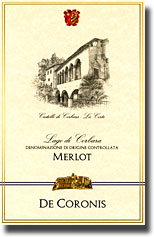 2003
Castello di Corbara Lago di Corbara Merlot De Coronis DOC, 13.5% alc., approx. $32.99:
Another deep, darkly colored wine, with rich, opulent black currant and blackberry
character shaded with a note of cocoa; well structured, with excellent
depth and length. Sourced from a
vineyard historically called “Villa de Coronis”, from which the wine
takes its name and that nowadays corresponds to Podere Corone; planted
to the cordon system, spur pruned with 6-8 buds; soil is medium clay and
sand with pebbles and vines are 20 years old. Production doesn’t exceed
40 quintals/hectare on around 2 hectares, with annual production around
70 hectolitres. Only produced in the best vintages, with a limited
number of bottles. Vinification and maceration take place in steel
containers for around 15-18 days at controlled temperature, followed by
malolactic fermentation in small oak casks (Tonneaux) of 5 hectolitres
each; Marco says that after 24 months in oak, it doesn’t need to be
filtered, because it’s already stable. Bottle-aged for 7-9 months before
being put on the market. Find this wine
2003
Castello di Corbara Lago di Corbara Merlot De Coronis DOC, 13.5% alc., approx. $32.99:
Another deep, darkly colored wine, with rich, opulent black currant and blackberry
character shaded with a note of cocoa; well structured, with excellent
depth and length. Sourced from a
vineyard historically called “Villa de Coronis”, from which the wine
takes its name and that nowadays corresponds to Podere Corone; planted
to the cordon system, spur pruned with 6-8 buds; soil is medium clay and
sand with pebbles and vines are 20 years old. Production doesn’t exceed
40 quintals/hectare on around 2 hectares, with annual production around
70 hectolitres. Only produced in the best vintages, with a limited
number of bottles. Vinification and maceration take place in steel
containers for around 15-18 days at controlled temperature, followed by
malolactic fermentation in small oak casks (Tonneaux) of 5 hectolitres
each; Marco says that after 24 months in oak, it doesn’t need to be
filtered, because it’s already stable. Bottle-aged for 7-9 months before
being put on the market. Find this wine
2003 Castello di Corbara Umbria Sangiovese Calistri IGT, 13.5% alc., approx. $32.99:
Offers
subtly floral blackberry and dried cherry flavors and aromas laced with
a dose of licorice, and underscored with the seemingly obligatory earthy
minerality, along with some sticks-y underbrush. A big, full-bodied
mouthful of wine that drinks well now, but will undoubtedly benefit from
a minimum of 3-5 years in the cellar. Marco characterizes this as
occurring from the “typical Umbrian Sangiovese clone,” similar to Brunello in that it shows a little more licorice and is a little more
elegant and round in the mouth.
Sourced from Castello di Corbara’s most
ancient vineyards, planted near the Castle and using the Guyot system,
spur pruned with 6-8 buds. Sandy soil, with alluvial substrata and
pebbles that Marco describes as being similar to that of Cheval Blanc.
The vineyards, now 40 years old, have been transformed using the Guyot
method and the production does not exceed 50 quintals/hectare; vineyard
area stretches over 3 hectares and the annual production is around 100
hectolitres. Only produced in the best vintages, with a limited number
of bottles. Vinification and maceration take place in steel containers
for around 15-18 days at controlled temperature, followed by malolactic
fermentation in small oak casks of 225 litres each, where the wine for
over 16 months. Bottle-aged for 7-9 months before being put on the
market.
Find this wine
Reporting from Day-twah,


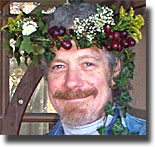
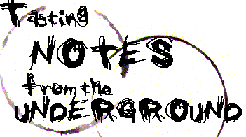
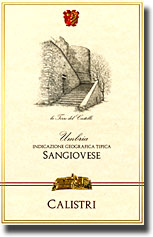 One
of the best things about this gig is getting to meet really
interesting people in the wine business, and two of the most engaging
guys I’ve met lately are principal figures in an Italian producer
centered in Umbria,
One
of the best things about this gig is getting to meet really
interesting people in the wine business, and two of the most engaging
guys I’ve met lately are principal figures in an Italian producer
centered in Umbria,

